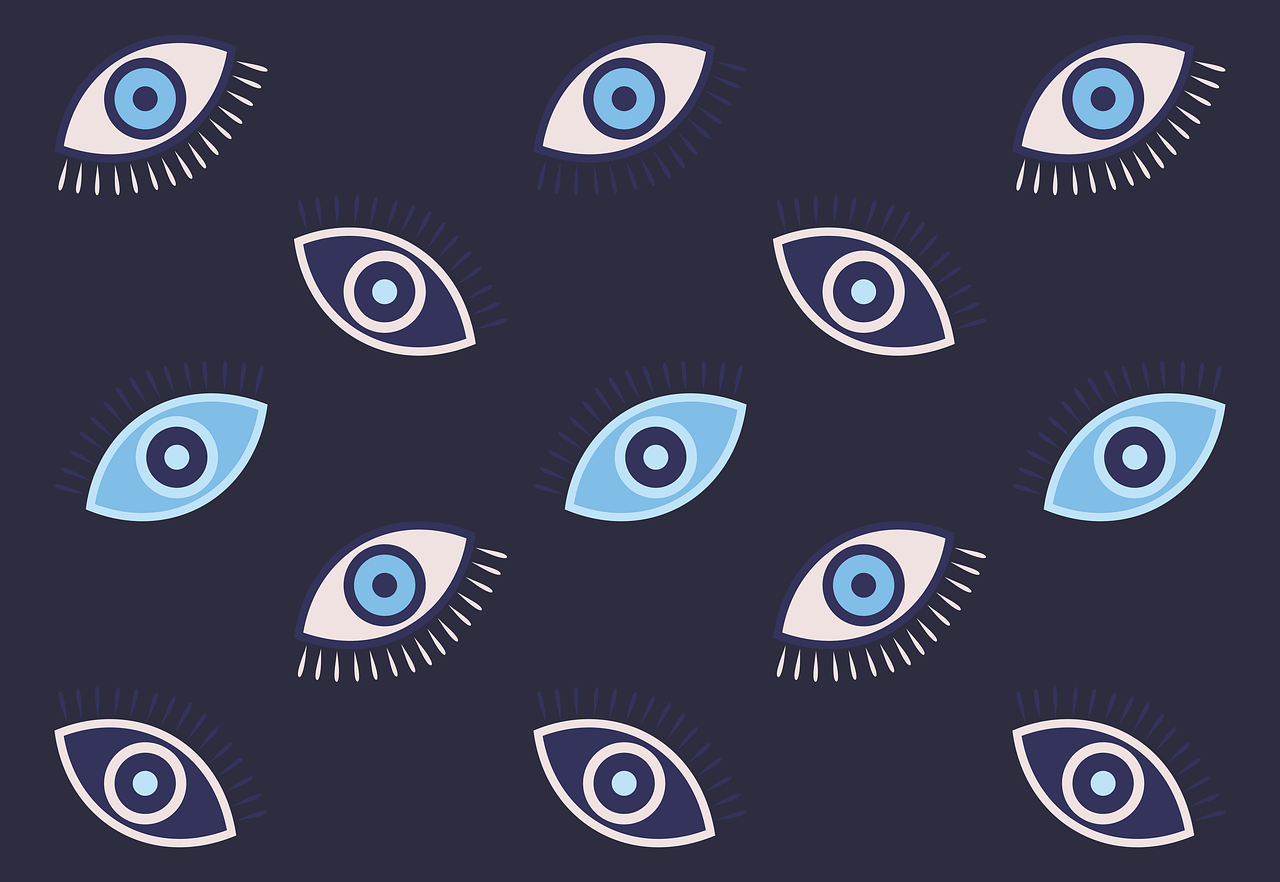
The Evil Eye: Meaning, History, and Cultural Beliefs
The evil eye is one of the oldest and most widespread superstitions in the world. Many cultures believe that a hostile or jealous glare can cause misfortune, illness, or spiritual harm. This belief appears across the Middle East, Asia, Europe, Africa, and the Americas, showing how deeply rooted and universal the fear of negative intention has always been.
What Is the Evil Eye?
The evil eye refers to the idea that a person can unintentionally or deliberately harm someone through a look filled with envy or resentment. A single glance is believed to carry destructive energy, affecting the victim’s luck, happiness, or well-being. Even today, many people avoid excessive praise or attention to prevent attracting unwanted energy.
Origins and Global History
Beliefs about the evil eye date back thousands of years. Ancient writings from Greece, Rome, the Middle East, and South Asia mention the destructive power of envy and how it can affect health, fertility, prosperity, or success. Despite cultural differences, the message remains the same: unchecked jealousy can cause spiritual and emotional damage.
The Evil Eye in the Middle East and Asia
The Evil in Islamic Teachings
In Islamic tradition, the Prophet Muhammad warned believers about the reality of the evil eye and advised remedies, including specific prayers and ritual cleansing.
Excessive Praise as a Trigger
Many communities across the Middle East and Asia avoid overpraising children or possessions. Compliments are often followed with phrases like “Mashallah” to prevent jealousy from attaching itself to the person or object.
The Evil Eye in Greece and Ancient Rome
Punishment for Pride and Vanity
Both Greek and Roman societies believed that excessive pride made a person vulnerable to destructive envy. Too much admiration could “invite” lead to illness, misfortune, or loss.
Illness Linked
Historical records show that unexplained sickness, headaches, or weakness were often attributed to harmful looks or negative spiritual energy.
The Evil Eye in India
In India, known as “Drishti” or “Nazar”, it has deep cultural and spiritual roots. Hindus believe the eyes are the body’s strongest source of energy, making them powerful enough to bless or harm.
Jealousy as the Source of Power
Jealous thoughts are believed to intensify the strength, especially during major life transitions like childbirth, weddings, or puberty.
Ritual Protection
People use black eyeliner, chili peppers, lemon garlands, or charcoal dots on children to protect them from unwanted energy. In some regions, even animals, especially snakes, are thought capable of casting a harmful gaze.
The Evil Eye in South America
Brazilian culture teaches belief in the “olho gordo,” or “fat eye,” a harmful gaze driven by greed or dishonesty. Sincere compliments are harmless, but false praise or envy is believed to cause spiritual disruption or discomfort.
The Evil Eye in Europe
European folklore contains many stories about the evil, often linked to witches or individuals believed to possess unusual spiritual power.
Physical Traits Associated With the Evil
In different regions, features such as red eyes, squinting eyes, or a unibrow were historically seen as signs of someone who could inflict harm through their gaze.
Jealous Looks and Bad Luck
Across Europe, envious or spiteful stares were blamed for causing accidents, damaged crops, illness, or family misfortune.
The Evil Eye in North America
In North America, the evil eye is often viewed more as a metaphor than a literal threat. Still, the phrase “giving someone ” remains common and expresses suspicion, anger, or disapproval.
Names for the Evil Eye Around the World
Different cultures use unique names to describe the evil eye:
- Turkey: Nazar
- Italy: Malocchio
- Greece: Mati
- Arabic regions: Ayin Harsha
- Hebrew: Ayin Ha’ra
- Germany: Böser Blick
- France: Mauvais Oeil
- Scotland: Droch Shuil
- Spain: El Mal de Ojo
Each name carries centuries of belief and tradition.
How to Protect Against the Evil Eye
People across the world use various methods to guard themselves from harmful energy. These can include prayers, rituals, symbolic gestures, or wearing specific colors believed to shield the body from jealousy or resentment.
Cures and Rituals
If someone is believed to be affected, different cultures offer remedies:
- Burning herbs or incense
- Performing protective hand gestures
- Massaging the forehead
- Placing charcoal or kohl dots on children
- Using salt, oil, or water rituals
These practices are meant to remove the negative influence and restore balance.
Protective Amulets and Symbols
Protective charms are among the most recognized tools against the evil.
The Nazar
This blue-and-white amulet originated in Greece and is now widely used in Turkey and throughout the Middle East.
The Hamsa
The Hamsa, known as the Hand of Fatima or Hand of Miriam, is believed to deflect harm and bring blessings. It is commonly worn as jewelry or hung in homes and vehicles.
The Evil Eye in Modern Culture
The symbol continues to influence fashion, design, jewelry, and spirituality. From bracelets to home décor, the eye motif appears everywhere and is embraced as a charm for protection, good luck, and peace of mind.
Celebrities and public figures have helped popularize these symbols, making them a global trend.
Is the Evil Real?
Whether viewed as a spiritual danger or a symbolic reminder of jealousy’s destructive power, the evil eye remains relevant in today’s world. Many people believe that envy, whether directed openly or hidden behind a smile, can harm relationships, careers, and emotional well-being. Protective symbols serve as reminders to stay grounded, humble, and aware of the energy around us.
Common forms of protection include amulets, prayers, salt, incense, hand signs, and symbolic jewelry such as the Nazar or Hamsa. These are believed to block or reflect harmful energy.
Yes. Many people wear protective jewelry or display symbols in their homes and businesses. The concept remains popular in spiritual practices, fashion, and cultural traditions.
The most recognized symbols are the blue Nazar amulet and the Hamsa hand. Both are used to deflect envy and negative intentions.
The belief dates back to ancient civilizations in Greece, Rome, the Middle East, and South Asia. These regions viewed jealousy as a destructive force capable of causing real harm.
The evil eye refers to a harmful or jealous glare that is believed to cause misfortune, illness, or emotional imbalance. Many cultures teach that envy can influence a person’s life in powerful ways.
